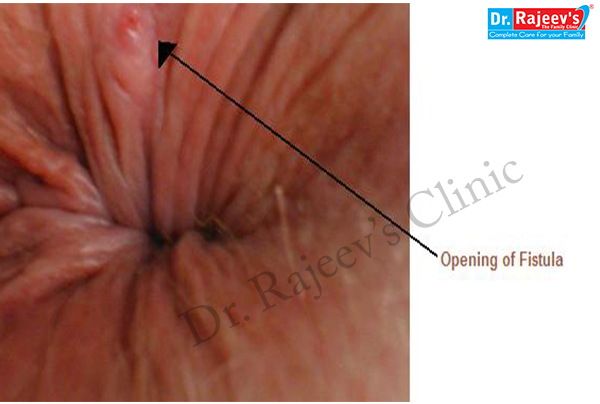

An Anorectal Abscess is a collection of pus in the area of the anus and rectum.
A majority of these abscesses arise from acute inflammation of the anal gland. Pus collects within the internal sphincter and gradually paves its way between the internal sphincter and conjoined longitudinal muscle. From here it tract down and comes superficially to the perianal region.

Ischiorectal abscess is an extension of anal gland inflammation laterally through the external sphincter. Infection may be through blood or lymph or through a penetrating injury causing direct infection from outside. The patient here complains of acute pain by the side of the anus. Pain is excessive during defaecation. On examination, a tender, browny, indurated swelling is seen and felt superficially to the ischiorectal fossa on one side of the anus. Some constitutional symptoms may also be present.
A blocked anal gland, a sexually transmitted infection (STI), or an infected anal fissure can cause anal abscesses. Some other risk factors include:
Toddlers or children that have a history of anal fissures (tears in the anal sphincter) are also at a higher risk for developing anal abscesses later on. Such anal fissures might occur in children who have a history of constipation.
Throbbing and constant pain in the anal area is probably one of the most common and immediately noticeable symptoms of anal abscess. The pain is usually accompanied by swelling in the anal area and greater pain during bowel movements.
Other common signs of an anal abscess include:
Some people may be able to feel a nodule or lump that’s red, swollen, and tender at the rim of the anus. Fever and chills can result from the infection. rectal bleeding or urinary symptoms such as difficulty urinating.
Anal abscesses may also occur deeper in the rectum, most often in those who have inflammatory bowel diseases. This can result in some pain or discomfort in the abdominal area.
In toddlers, there typically aren’t many symptoms other than signs of discomfort or pain, which may cause a child to become irritable. A lump or nodule may also be visible or felt around the anal area.
Homeopathic treatment is depend upon totallity of symptoms and individuality of patient.Some usefull medicine for this condition are
Myritstica, Silicea, Hepar Sulph, Calcarea Sulph.
FISTULA DROP